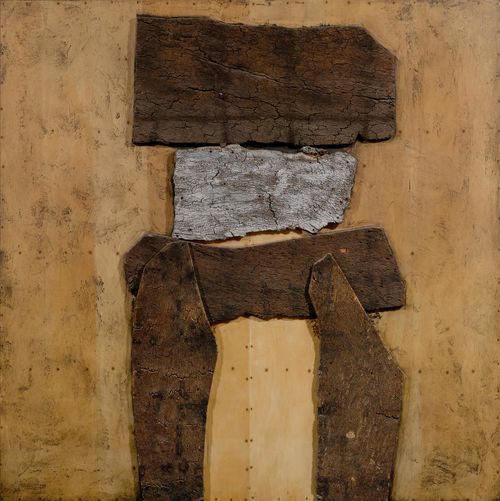
Lot 3416* - Z41 PostWar & Contemporary - samedi, 03. décembre 2016, 14h00
ROBERTO CRIPPA
Provenance:
- Galleria Schwarz, Milan (verso with the lable).
- Galleria Annunciata, Milan (verso with the lable).
- Galleria Schubert, Milan (verso with the lable).
- Purchased from the above gallery by the present owner, since then privately owned Italy.
The Italian artist Roberto Gaetano Crippa was born in Monza in 1921. Between 1947 and 1948 he attended the “Accademia di Brera” in Milan. Initially Crippa became involved with Action Painting. He created wild spirals, which unfolded within the space of the canvas. His first exhibition took place at “Galerie Bergamini” in Milan around 1947. There he made the acquaintance of Lucio Fontana, who invited him to join the artist movement “Spazialismo”. In contrast to Fontana, whose artistic research was directed at overcoming painting, Crippa’s practice remained within traditional media.
The canvas remained the medium on which he experimented, and he accepted its boundaries. In the 1950s Crippa developed a montage technique, in which he brought together various materials such as tree bark, cork, or iron with nails and glue, and applied them to the canvas. In this he was therefore close to his compatriot Alberto Burri and the Spaniard Antoni Tapiès, all three of whom, in the course of developing from or freeing themselves from the Informel and Abstract Expressionism, explored the most diverse, ordinary and everyday materials, and pushed them to the limits of possibility. The early 1960s in particular were especially fruitful in this respect. Crippa took part in the Biennale in Venice and the Triennale in Milan on several occasions. In addition, he exhibited at the first documenta in Kassel in 1955.
The present large format work is a wonderful example of Crippa’s exploration of various materials. The size of the work and also the size of the individual pieces of cork at first give the impression of sheer mass, but when one lingers over the piece, one begins to discern the structure and form of the cork elements in detail, and the work loses its initial massive quality.
CHF 20 000 / 30 000 | (€ 20 620 / 30 930)
Vendu pour CHF 24 500 (frais inclus)
Aucune responsabilité n'est prise quant à l´exactitude de ces informations.
